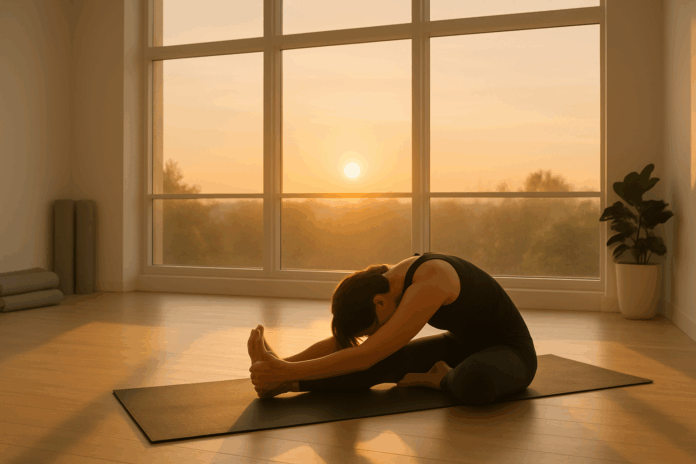Waking up with stiff muscles or experiencing soreness after a long workout isn’t just uncomfortable; it can also interfere with your daily performance, exercise progress, and even long-term joint and tissue health. While muscle stiffness is often dismissed as a minor inconvenience, research reveals that chronic stiffness and tightness may be early signs of reduced flexibility, declining joint function, and increased injury risk. Fortunately, engaging in consistent stretching routines designed specifically to relieve stiffness and promote recovery can dramatically enhance muscle mobility, circulation, and overall well-being.
You may also like : Best Stretches for Sore Legs and Tight Thigh Muscles: How to Relieve Upper Leg Pain Safely and Naturally
Stretching plays a pivotal role in counteracting the physical constraints caused by stiff muscles. Unlike general warm-ups or static cooldowns, expert-approved stretches for stiffness focus on improving elasticity within muscle fibers and tendons while optimizing neuromuscular coordination. These movements are more than just placeholders in a workout; they serve as therapeutic tools that enhance musculoskeletal health and function. Whether you’re an athlete recovering from intense training or someone dealing with age-related stiffness, choosing the right exercise for stiff muscles can make all the difference in how you move, feel, and perform.
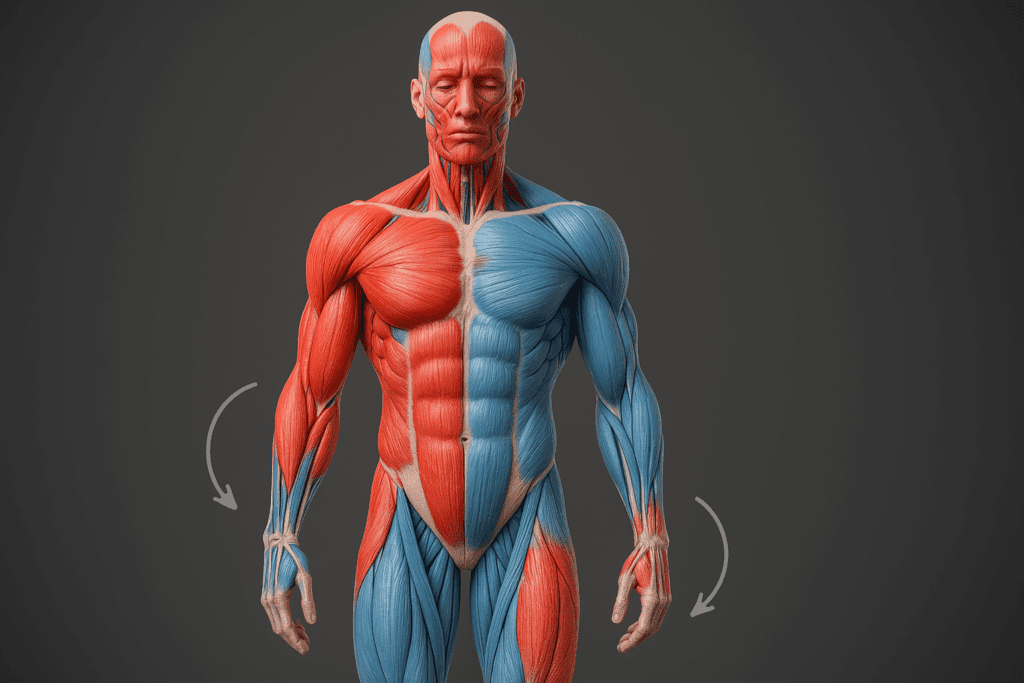
Understanding Muscle Stiffness: What It Means and Why It Matters
Muscle stiffness is a complex physiological state that typically arises from several overlapping mechanisms. These include delayed onset muscle soreness (DOMS), microtrauma within muscle fibers, neurological tightness caused by prolonged inactivity, or fascial restrictions that limit range of motion. While occasional stiffness can be a sign of productive muscle engagement and repair, persistent tightness often reflects imbalances or dysfunction in movement patterns.
When muscles are stiff, they resist elongation and restrict joint mobility, which can cascade into compensation patterns throughout the body. For example, tight hamstrings can affect pelvic alignment, leading to lower back strain. Similarly, stiff shoulders may limit overhead arm movement and contribute to neck tension. These biomechanical consequences highlight the importance of addressing stiffness not merely as discomfort, but as a modifiable factor influencing physical performance and longevity.
Moreover, scientific studies underscore the benefits of targeted flexibility training. Controlled stretching has been shown to enhance blood flow to soft tissues, reduce muscle tone in hyperactive areas, and stimulate proprioceptive feedback—a crucial component of joint stabilization. In clinical settings, therapeutic stretching protocols are often prescribed to patients recovering from musculoskeletal injuries, illustrating its role in both prevention and rehabilitation. Thus, selecting the right stretches for stiffness is essential not only for comfort but also for safeguarding long-term mobility.

The Science Behind Stretching and Muscle Recovery
Effective stretching does more than lengthen muscles; it triggers a cascade of physiological events that facilitate healing and performance optimization. When a muscle is stretched, mechanoreceptors embedded in muscle spindles and Golgi tendon organs detect changes in tension and length. These signals are processed by the central nervous system to either inhibit excessive contraction or promote relaxation, depending on the intensity and duration of the stretch.
This neurophysiological response is vital in reducing muscle stiffness and enhancing range of motion. Additionally, stretching increases local circulation, promoting oxygen delivery and nutrient transport while assisting in the removal of metabolic waste. These factors collectively accelerate tissue repair and reduce soreness, making stretching a valuable component of post-exercise recovery protocols.
Moreover, research on fascia—the connective tissue surrounding muscles—has revealed that this network is responsive to mechanical tension and plays a significant role in musculoskeletal function. Fascial adhesions or thickening can contribute to stiffness and pain. Myofascial stretches, which target both muscle and fascial tissues, have gained traction among physical therapists and performance coaches for their ability to restore pliability and reduce mechanical resistance.
Beyond physiology, the psychological aspect of stretching cannot be overlooked. Mindful stretching practices such as yoga or breath-focused static stretching sessions help activate the parasympathetic nervous system, inducing a state of relaxation that facilitates muscle release and recovery. This holistic interplay of physical and mental effects underscores the importance of stretching as both an art and a science.
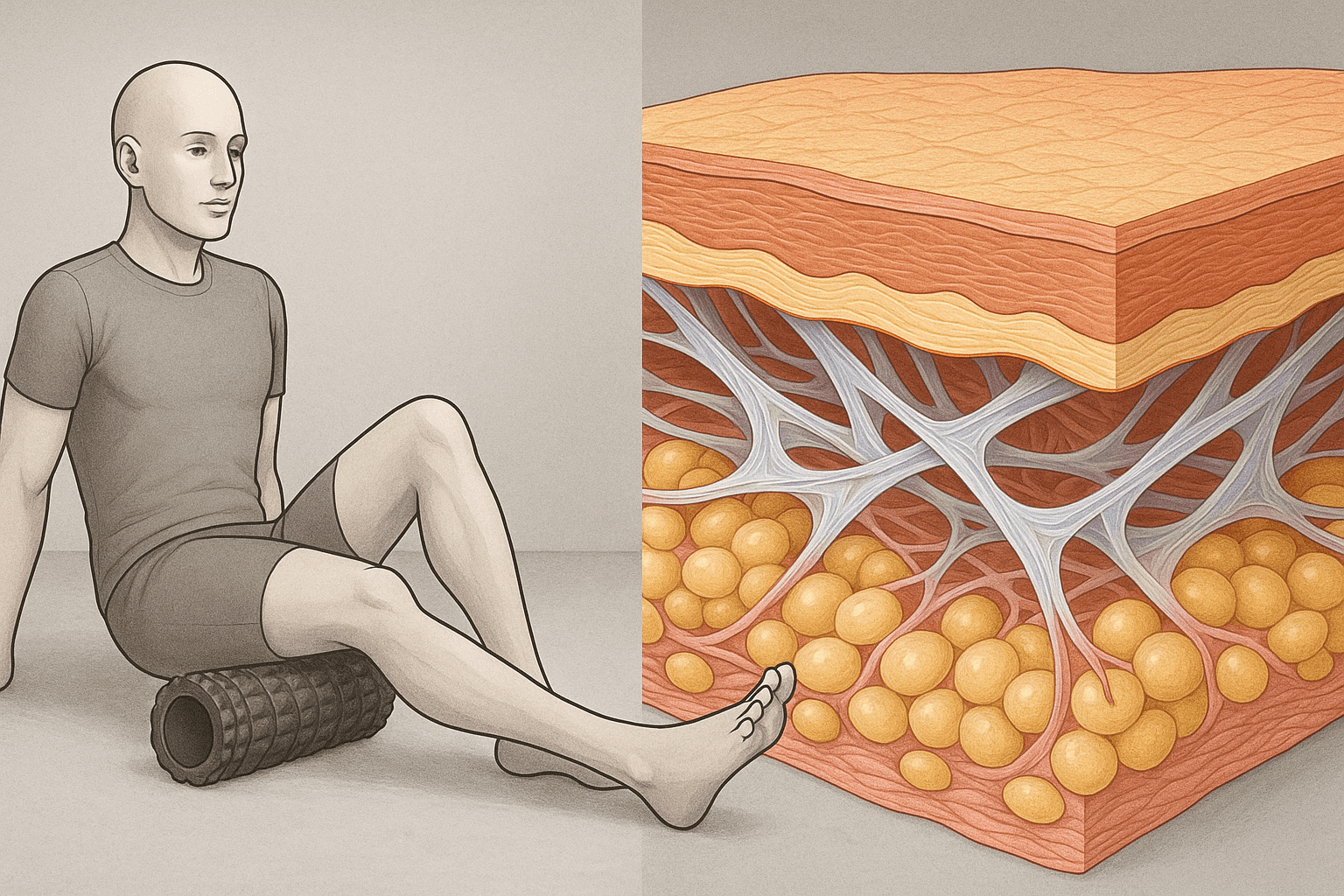
Myofascial Release and the Role of Fascia in Muscle Mobility
Fascia is a web-like connective tissue that envelops muscles, organs, and joints, playing a pivotal role in movement coordination and mechanical stability. When fascia becomes dehydrated or forms adhesions due to injury or repetitive stress, it restricts mobility and contributes to stiffness. Myofascial release (MFR) targets these restrictions directly through sustained pressure and gentle movement, which restore tissue gliding and enhance functional range of motion.
Foam rolling is one of the most accessible forms of self-myofascial release. By applying body weight over a foam roller and slowly moving across it, individuals can identify and release trigger points—localized areas of muscle tightness that contribute to generalized stiffness. Unlike passive stretching, foam rolling stimulates both superficial and deep fascial layers, improving circulation and lymphatic flow.
Clinical massage therapy and instrument-assisted soft tissue mobilization (IASTM) are professional MFR techniques used by physical therapists and sports massage specialists. These treatments apply deeper pressure using hands or specialized tools to break down scar tissue, realign collagen fibers, and improve muscle pliability. When combined with post-session stretching, the results can be profoundly restorative.
The Importance of Joint Mobility Work in Flexibility Training
While stretching addresses muscle length and tension, joint mobility work focuses on enhancing the functional capacity of joints to move through their full anatomical range. Stiffness is often rooted not only in tight muscles but also in restricted joint capsules, synovial membrane dysfunction, and underactive stabilizing muscles. To truly address stiffness, both flexibility and joint mobility must be trained concurrently.
Controlled articular rotations (CARs), a technique popularized in Functional Range Conditioning (FRC), are slow, deliberate joint movements performed through the fullest possible range. These exercises stimulate mechanoreceptors, improve joint lubrication, and activate the smaller stabilizer muscles that are often overlooked in traditional strength training or stretching. For instance, shoulder CARs can significantly enhance scapular control, which in turn reduces upper back stiffness.
Another valuable technique is banded joint distraction, where resistance bands are used to gently pull joints away from their socket, creating space within the joint capsule. This method is especially effective for the hips, shoulders, and ankles. Combined with mobility drills and dynamic stretching, banded distraction restores proper joint mechanics and reduces the neurological inhibition that often accompanies chronic stiffness.
Hydration, Nutrition, and Their Influence on Muscle Pliability
Tissue hydration is a frequently overlooked factor in muscle stiffness and flexibility. Water is essential for the elasticity of muscles and fascia. When tissues are dehydrated, they become sticky and less responsive to stretching. Adequate hydration allows muscle cells to maintain optimal turgor pressure, facilitating better contractile function and relaxation.
Electrolyte balance is equally important. Minerals such as magnesium, potassium, and calcium play key roles in muscle contraction and relaxation. Magnesium deficiency, for example, has been linked to muscle cramps, stiffness, and fatigue. Ensuring a diet rich in leafy greens, seeds, nuts, and mineral-rich water can support both neuromuscular health and recovery.
Protein intake is another critical component, especially for individuals engaging in exercise for stiff muscles. Protein provides the amino acids necessary for muscle repair and collagen synthesis—both vital in the remodeling of connective tissues after stretching or physical activity. Omega-3 fatty acids, found in fatty fish and flaxseeds, have also been shown to reduce inflammation and support tissue flexibility. Together, hydration and nutrition form the biochemical foundation for a supple, responsive body.

Dynamic vs. Static Stretching: Which Is Best for Stiff Muscles?
Choosing the appropriate form of stretching can influence how effectively you alleviate stiffness and enhance recovery. Two main categories dominate the conversation: dynamic and static stretching. Each serves unique purposes and has distinct benefits depending on the context in which they are used.
Dynamic stretching involves active movements that take muscles and joints through their full range of motion. Examples include leg swings, arm circles, and walking lunges. These exercises are ideal for warming up, as they stimulate blood flow, increase muscle temperature, and activate neuromuscular coordination. For individuals dealing with stiffness due to prolonged sedentary behavior, dynamic stretches can provide a gentle yet effective way to reintroduce movement without overstressing cold muscles.
On the other hand, static stretching involves holding a position at the end of a muscle’s range for 20 to 60 seconds. This approach is best utilized post-exercise or during designated recovery sessions. Static stretches help to elongate muscle fibers, reduce post-activity tension, and enhance flexibility over time. For example, a seated forward fold can target tight hamstrings and lower back muscles, while a doorframe chest stretch can alleviate shoulder tightness from poor posture.
A hybrid approach that combines both forms may offer the best outcomes. Dynamic movements prepare the body for activity and prevent injury, while static holds promote recovery and long-term mobility. Understanding when and how to implement these modalities is key to building an intelligent stretching routine tailored to your unique needs.
The Role of Sleep and Circadian Rhythms in Muscle Recovery
Sleep is often undervalued in discussions about physical recovery and flexibility. Yet, it is during sleep—particularly deep, slow-wave sleep—that the body undergoes critical repair processes. Growth hormone release peaks during this stage, stimulating protein synthesis and tissue regeneration. Inadequate sleep can impair muscle recovery, increase inflammatory markers, and contribute to persistent stiffness.
Circadian rhythms also influence muscle function and joint mobility. Research suggests that core body temperature, which rises in the afternoon and early evening, is associated with increased muscle elasticity and reduced resistance to stretching. Therefore, performing stretching routines later in the day may yield better results than early-morning sessions for some individuals.
Moreover, disruptions to circadian alignment—such as shift work or irregular sleep schedules—have been linked to musculoskeletal disorders and delayed healing. Prioritizing consistent sleep hygiene, exposure to natural light during the day, and relaxation practices before bedtime can enhance the body’s readiness for tissue adaptation and repair.
Expert-Recommended Exercise for Stiff Muscles That Promotes Lasting Relief
When it comes to creating an effective exercise for stiff muscles, the goal is to blend targeted muscle activation with controlled stretching to restore balance and symmetry. Experts often recommend beginning with general mobility work to increase circulation and tissue pliability. For instance, gentle cat-cow movements performed on all fours can help warm up the spine and surrounding musculature.
Once the body is primed, more specific exercises can be introduced. One particularly effective option for lower-body stiffness is the world’s greatest stretch—a compound movement involving a lunge, spinal twist, and hamstring reach. This stretch activates multiple muscle groups simultaneously, offering both mobility and neuromuscular reeducation. For the upper body, doorway pec stretches and thoracic extensions over a foam roller are effective in releasing tension built up from prolonged desk work or repetitive arm motions.
To address stiffness in the hips, the 90/90 stretch offers a powerful way to target deep internal and external rotators. Holding this position and gradually leaning into the stretch helps release adhesions in the hip capsule and surrounding tissues. For individuals with generalized stiffness, incorporating yoga-inspired sequences such as downward dog, cobra, and child’s pose can provide full-body relief while encouraging diaphragmatic breathing.
Crucially, these exercises should be performed mindfully, with attention to breath and sensation. Overstretching or bouncing into positions can lead to strain rather than relief. Expert guidance—whether from a physical therapist, athletic trainer, or certified yoga instructor—can help ensure proper form and progression, allowing these movements to become sustainable habits rather than fleeting fixes.
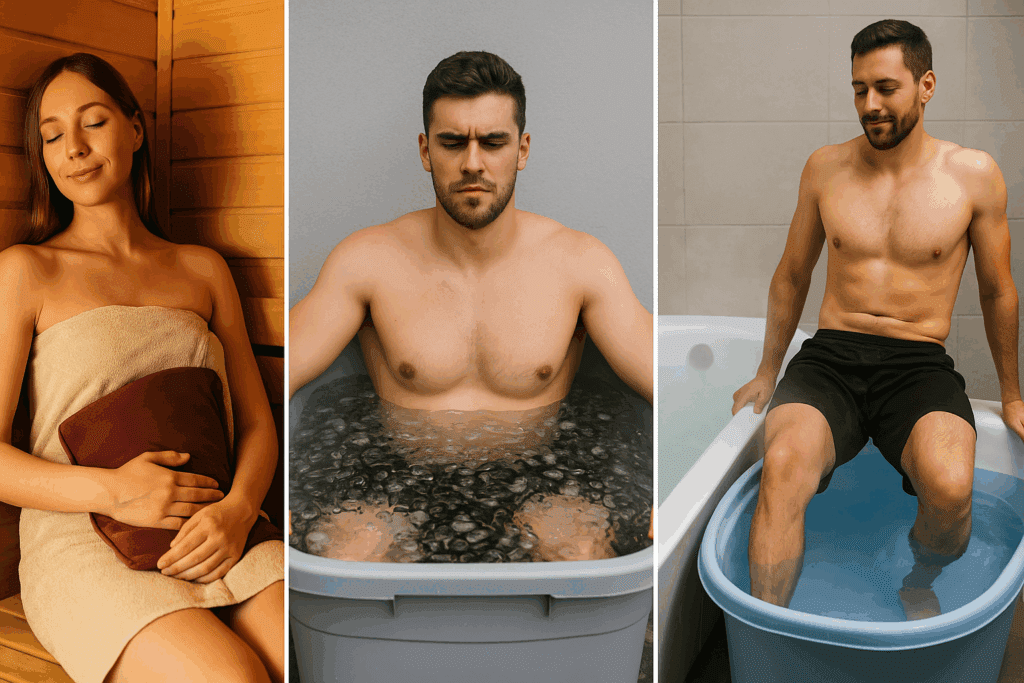
Temperature-Based Therapies: Heat, Cold, and Contrast Treatments
Thermotherapy and cryotherapy are valuable adjuncts to traditional stretching routines, especially when dealing with chronic stiffness or injury-related immobility. Heat therapy, applied through hot baths, heating pads, or infrared saunas, increases blood flow, reduces muscle tone, and prepares tissues for stretching by making them more pliable. Moist heat in particular can penetrate deeper into muscle layers than dry heat, offering greater benefits for dense or large muscle groups.
Conversely, cold therapy is effective for reducing inflammation and numbing sore or overused tissues. Ice packs and cold water immersion can constrict blood vessels and slow down metabolic processes, providing relief from acute stiffness or muscle fatigue. However, cryotherapy should be used cautiously before stretching sessions, as it may temporarily decrease muscle elasticity.
Contrast therapy, which alternates between hot and cold applications, combines the benefits of both modalities. This method enhances circulation through a pumping effect caused by vasodilation and vasoconstriction. Athletes and rehabilitation professionals frequently use contrast therapy to accelerate recovery from intense training or injury. When followed by gentle stretching, these treatments can significantly reduce stiffness and restore function.
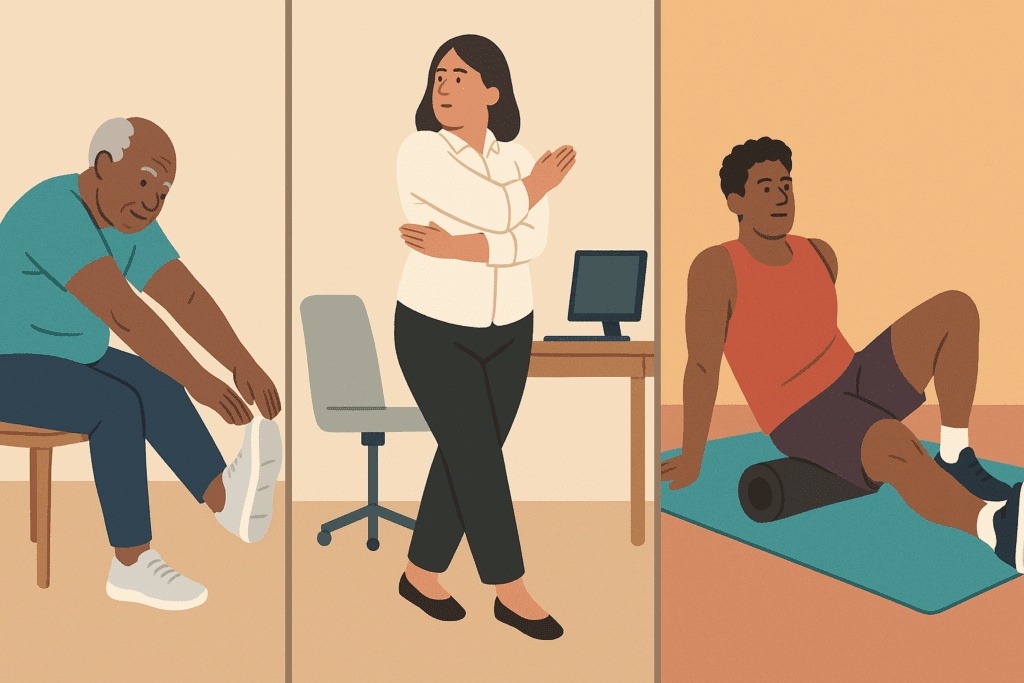
Stretches for Stiffness Caused by Aging, Sedentary Lifestyles, and Overtraining
Not all muscle stiffness arises from the same cause, and tailoring your stretching approach to the underlying issue can lead to more meaningful results. For example, age-related stiffness often stems from reduced collagen elasticity, sarcopenia (age-related muscle loss), and joint degeneration. Gentle yet consistent stretching routines can help preserve function and delay the progression of stiffness linked to aging.
Seated hamstring stretches, wall-supported calf stretches, and gentle spinal twists can enhance lower-body flexibility in older adults. These movements are low impact and can be adapted for various mobility levels, making them especially suitable for those with arthritis or balance concerns. Additionally, slow-paced yoga practices such as Yin or Hatha yoga promote fascia release and joint lubrication, both of which are vital for aging populations.
For those leading sedentary lifestyles—such as office workers or remote professionals—stiffness often accumulates in the neck, shoulders, hips, and lower back. Counteracting this pattern requires mobility breaks throughout the day combined with specific stretches like hip flexor lunges, shoulder blade squeezes, and seated spinal rotations. Even brief movement sessions interspersed between desk work can reset posture and reduce muscular fatigue.
In contrast, individuals experiencing stiffness from overtraining may need a recovery-focused strategy that integrates active rest, gentle mobility work, and therapeutic stretching. Overworked muscles benefit from low-intensity modalities such as foam rolling, proprioceptive neuromuscular facilitation (PNF) stretching, and contrast therapy. By addressing the specific source of stiffness, whether it’s disuse, misuse, or overuse, these targeted approaches create lasting results and minimize injury risk.
The Role of Breath, Mindfulness, and Consistency in Stretching Success
Stretching is not solely a mechanical process; it is deeply intertwined with neurological regulation and psychological state. Many individuals approach stretching with a mindset of forceful lengthening, pushing their bodies to extremes in the hope of quick relief. However, this aggressive approach often backfires, triggering muscle guarding and increased tension. A more sustainable and effective path involves combining breath awareness and mindfulness with each stretch.
Slow, diaphragmatic breathing activates the parasympathetic nervous system, signaling the body that it is safe to relax. This physiological shift allows muscles to release tension more readily, transforming static holds into opportunities for recalibration and healing. Practicing mindfulness during stretching—paying attention to bodily sensations, breath patterns, and subtle shifts in tension—enhances proprioception and creates a feedback loop that fosters safe and deep release.
Consistency is another pillar of effective flexibility training. While a single session can provide temporary relief, long-term improvements in muscle pliability and joint mobility require regular practice. Experts recommend integrating stretching into both morning and evening routines or scheduling designated mobility days alongside strength training. Over time, this disciplined approach rewires the neuromuscular system and leads to greater ease of movement in everyday life.
Furthermore, treating stretching as a form of self-care rather than an afterthought can change one’s relationship with movement. Incorporating soothing music, dim lighting, or aromatherapy can transform a simple routine into a restorative ritual. This shift in mindset encourages compliance and embeds stretching into one’s lifestyle as a proactive investment in well-being.
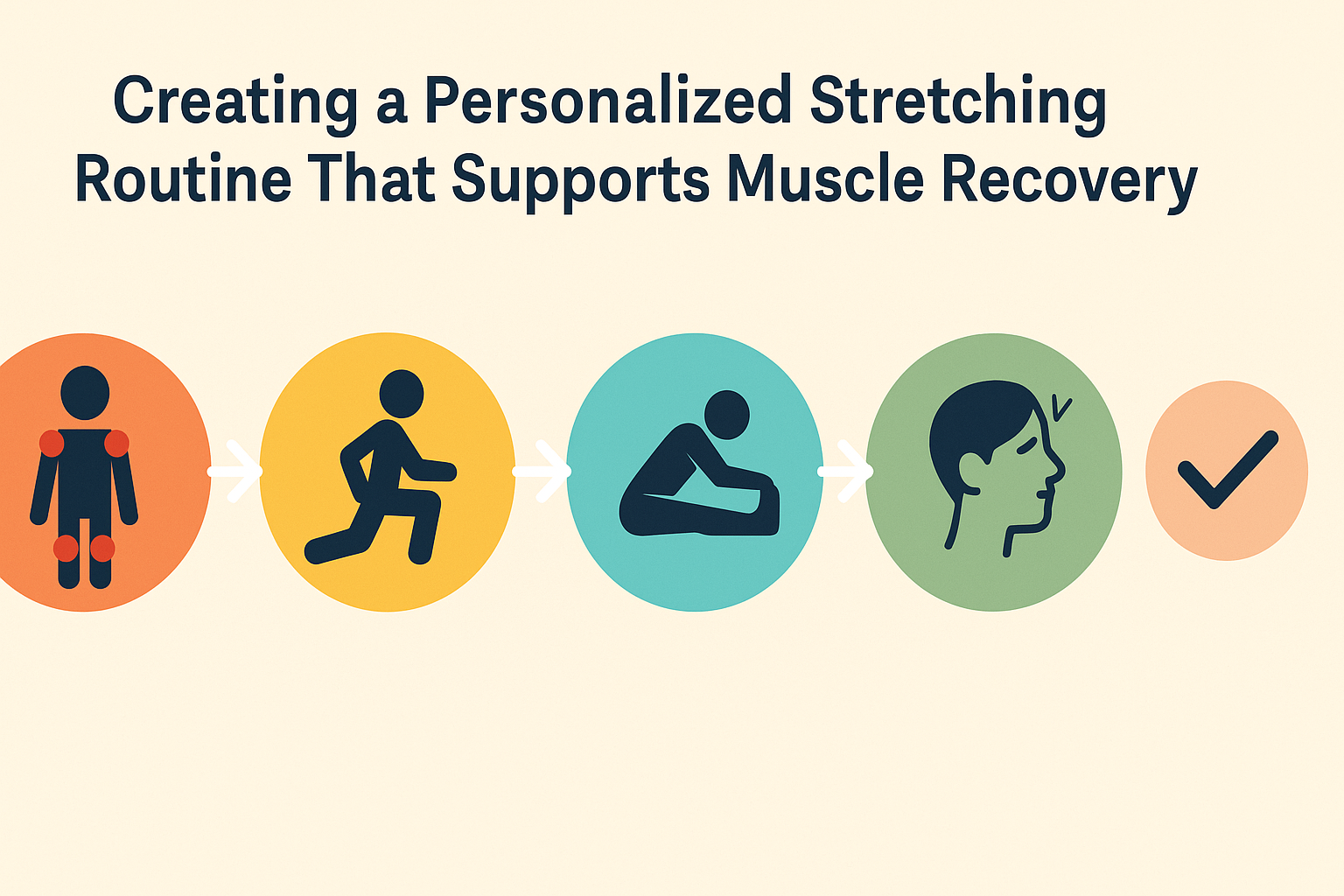
Creating a Personalized Stretching Routine That Supports Muscle Recovery
Building an effective stretching routine involves more than stringing together a series of popular movements. To support muscle recovery and alleviate stiffness, a personalized approach that considers one’s lifestyle, physical demands, injury history, and flexibility goals is essential. A well-rounded routine typically includes both global and localized stretches, sequenced in a way that promotes blood flow, releases tension, and enhances range of motion.
Start by identifying areas of chronic tightness or restricted movement. This can be accomplished through self-assessment, movement screenings, or consultation with a fitness or healthcare professional. Once key areas have been pinpointed, select stretches that target these zones while also including complementary movements that restore postural symmetry. For example, a runner with tight calves may also benefit from hip opener stretches to correct compensatory gait patterns.
Each stretch should be held long enough to stimulate tissue adaptation, typically between 30 and 60 seconds, and repeated two to three times. The use of props such as resistance bands, yoga blocks, or foam rollers can enhance accessibility and effectiveness. Incorporating mobility drills at the beginning of a workout and static holds at the end can further optimize tissue recovery and minimize post-exercise soreness.
Above all, a successful routine is one that fits seamlessly into your lifestyle. Whether it’s five minutes in the morning, a midday break from your desk, or a relaxing evening flow, consistency is more important than intensity. By approaching stretching with intention and structure, it becomes not just a reaction to stiffness but a proactive strategy for muscular longevity.
Frequently Asked Questions: Advanced Insights on Stretching and Muscle Recovery
1. How does stretching influence long-term joint health beyond just relieving stiffness?
Stretching is often seen as a quick fix for tight muscles, but its long-term effects on joint health are equally significant. Regular stretching improves synovial fluid circulation within joints, which is essential for reducing friction and maintaining cartilage health. Over time, consistent stretching supports the development of stronger neuromuscular coordination, which helps stabilize joints during movement. While many rely on exercise for stiff muscles to restore function, pairing that with stretching can prevent abnormal wear patterns in joint surfaces. This long-term structural protection is especially valuable for aging adults and those with early signs of osteoarthritis.
2. Are there specific stretches for stiffness that benefit neurological conditions like multiple sclerosis or Parkinson’s disease?
Yes, research in neurorehabilitation suggests that certain flexibility routines can support individuals with neurological disorders by improving proprioception and reducing muscle rigidity. For example, passive range-of-motion stretches and proprioceptive neuromuscular facilitation (PNF) are particularly effective when adapted for these populations. These methods not only offer stretches for stiffness, but they also stimulate the sensory-motor pathways that become impaired in such conditions. Incorporating a mindful approach—with breath awareness and slow, repeated movements—can further enhance neuroplasticity. Stretching should always be guided by a medical professional in these cases, but it holds growing promise in neurological care.
3. Can emotional stress contribute to muscle stiffness, and how can stretching help address it?
Emotional stress activates the sympathetic nervous system, often leading to muscle guarding and chronic tension, particularly in the neck, shoulders, and back. When stress becomes chronic, the resulting stiffness is not purely physical—it’s also neurologically driven. Stretching offers a way to reset the nervous system through parasympathetic activation, especially when paired with controlled breathing or mindfulness techniques. This mind-body connection makes exercise for stiff muscles more than a physical remedy; it becomes a psychological release mechanism. Incorporating gentle, restorative stretches into daily routines can help manage emotional stress and prevent its muscular consequences.
4. How do gender and hormonal fluctuations affect flexibility and the effectiveness of stretching routines?
Hormonal differences between men and women, especially estrogen and relaxin levels, can influence muscle elasticity and joint laxity. For example, during the menstrual cycle, women often experience greater flexibility due to hormonal shifts, which can temporarily enhance the effects of stretches for stiffness. However, menopause may bring about reduced collagen production, contributing to increased stiffness. Men, by contrast, typically experience tighter connective tissues and may benefit from prolonged, heat-assisted stretching. Understanding these hormonal influences can help tailor an effective exercise for stiff muscles, adjusting intensity and duration to match physiological changes.
5. Is it possible to overstretch muscles, and what are the signs that stretching is doing more harm than good?
Yes, overstretching is a real risk, especially when individuals push beyond their active range of motion or use poor form. Symptoms of overstretching include joint instability, lingering soreness, and even microtears in muscle or connective tissue. It’s crucial to differentiate between productive discomfort and pain; the latter is a signal to stop. Even though stretches for stiffness are beneficial, applying them too aggressively can backfire. Following a progressive, controlled approach—especially under guidance—ensures that stretching remains safe and effective without compromising tissue integrity.
6. How do elite athletes use stretching differently to maintain peak performance and reduce stiffness?
Elite athletes often adopt sport-specific stretching regimens that are integrated with mobility drills, proprioceptive training, and neuromuscular reeducation. They don’t just rely on a general exercise for stiff muscles but use data from biomechanical assessments to target precise areas of imbalance or tightness. Post-exercise stretching is often combined with modalities like cryotherapy, soft tissue manipulation, and dynamic warm-ups to accelerate recovery. Additionally, recovery days may include guided yoga sessions or PNF stretches tailored to their training cycle. This individualized, multi-dimensional strategy prevents chronic stiffness and supports performance longevity.
7. What is the role of wearable technology in evaluating the effectiveness of stretches for stiffness?
Wearable fitness and rehabilitation devices are increasingly used to monitor muscle activation, joint range of motion, and recovery metrics. Tools like electromyography (EMG) sensors or motion capture apps allow users to objectively assess whether their stretching routine is making measurable progress. For instance, a decrease in muscular resistance during repeated exercise for stiff muscles may be tracked over time through these devices. Wearables also provide real-time feedback, helping users correct form and avoid overexertion. In clinical settings, they support physical therapists in designing more precise, responsive treatment plans.
8. How can stretching routines be modified for individuals recovering from orthopedic surgery?
Post-surgical stiffness, particularly following procedures like rotator cuff repair or total knee replacement, requires specialized stretching protocols. These protocols begin with passive stretches and gradually introduce active-assistive movements under supervision. Using gentle stretches for stiffness in a controlled setting helps prevent complications like joint adhesions and contractures. Moreover, modalities like aquatic therapy or heated stretching may be introduced to ease pain and improve compliance. Recovery timelines vary, but early, targeted stretching plays a pivotal role in regaining full mobility post-surgery.
9. Are there cultural or traditional practices that incorporate exercise for stiff muscles in unique ways?
Many cultures have long traditions of movement-based practices that effectively serve as exercise for stiff muscles. For example, traditional Chinese practices like Qigong use slow, meditative movements that combine breath control with dynamic stretching. Similarly, Indian yoga incorporates a vast repertoire of poses that address joint and muscle stiffness through isometric holds and rhythmic breathing. African dance traditions, particularly those used in community rituals, often feature fluid, repetitive movements that naturally release stiffness and build coordination. Exploring these global approaches can enrich one’s understanding of stretching as both a physical and cultural ritual.
10. What innovations are on the horizon in the science of flexibility and muscle recovery?
Emerging research is exploring the use of neurofeedback, AI-driven flexibility tracking, and stem cell therapy to support muscle recovery and range of motion. For instance, devices that map neuromuscular response during stretching are being developed to offer tailored feedback in real time. Researchers are also studying the impact of circadian biology on the ideal timing of stretches for stiffness, suggesting that syncing stretches with internal body clocks may enhance effectiveness. In regenerative medicine, injectable therapies are being tested to repair damaged connective tissue and accelerate recovery from stiffness-related conditions. As science evolves, we can expect more personalized, precise, and biologically intelligent ways to approach exercise for stiff muscles.
Conclusion: Why the Right Stretches for Stiffness Are Essential for Long-Term Recovery and Mobility
Stiffness may seem like a temporary nuisance, but it is often the body’s signal that deeper imbalances, tension, or recovery deficits are at play. Choosing the right stretches for stiffness is not just about immediate comfort; it is a vital practice that supports long-term mobility, functional fitness, and injury prevention. Whether you’re managing soreness from an intense training cycle or countering the effects of a sedentary lifestyle, the strategic use of expert-backed exercise for stiff muscles can transform how your body moves and feels.
From increasing circulation and tissue repair to promoting parasympathetic relaxation and postural balance, stretching bridges the gap between activity and recovery. It allows us to fine-tune the neuromuscular system, reduce mechanical stress, and cultivate body awareness that enhances every aspect of our physical well-being. Embracing this practice with mindfulness, regularity, and informed technique not only alleviates current discomfort but also lays the foundation for lifelong movement vitality.
Incorporating stretching into your daily routine isn’t just about touching your toes or mastering yoga poses. It’s about honoring your body’s need for space, flow, and renewal. With a thoughtful, evidence-based approach, the simple act of stretching becomes a powerful tool for health, resilience, and lasting relief from stiffness.
Further Reading:
Relieve Tension and Stiffness With Stretching
This Quick Full-Body Stretching Routine Will Help Loosen Stiff Muscles

